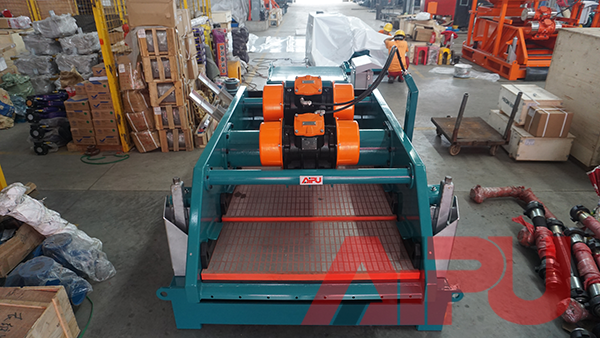How to choose the right drilling fluid vibrating screen?
1. Define Drilling Requirements
Processing Capacity Matching: Select vibration screen capacity 20%-30% higher than actual drilling fluid circulation rate to handle peak loads.
Solid Particle Size Distribution: Analyze particle range (e.g., coarse sand, fine powder) and match screen mesh size (e.g., 20/40/60 mesh) for effective separation.
2. Core Performance Parameters
Screen Area & Layers: Larger area improves efficiency (e.g., 30-50% higher with dual-layer screens). Multi-layer screens enable graded separation and extend lifespan.
Vibration Intensity (G-force): Typical range: 4-6G (conventional drilling), 6-8G for high-viscosity or barite-weighted mud. Balance efficiency with equipment durability.
Screen Angle: Maintain 0°-5° inclination to avoid reducing solid retention time.
3. Screen Material & Type
Material Selection:
- Stainless Steel Mesh: Corrosion-resistant, long lifespan (600-800 hours), suitable for acidic/H₂S environments.
- Composite Mesh (e.g., Polyurethane): Cost-effective, impact-resistant, shorter lifespan (200-400 hours).
Screen Structure:
- Wavy Mesh: Increases effective filtration area, reduces blinding.
- Pre-tensioned Mesh: Enhances precision and durability.
4. Equipment Adaptability
Installation Type:
- Skid-Mounted: Portable for land drilling.
- Modular Design: Integrates into solids control systems, saves space.
Splash Protection: Equip with skirts or enclosed structures to meet environmental standards.
Environmental Resistance: IP55 rating for harsh conditions (heat, cold, dust).

5. Maintenance & Operational Costs
Quick-Change Screens: Prioritize hydraulic-assisted frames to reduce downtime.
Energy Consumption: Match motor power to processing demands.
Spare Parts Availability: Choose mainstream brands (e.g., Derrick, NOV) for easy access to screens/motors.
6. Special Conditions
Deep/Ultra-Deep Wells: High-temperature (150°C+) screens and robust motors required.
Horizontal/ERD Wells: High-capacity, low-pulsation screens minimize fluid surge.
Eco-Compliance: Add dryer units or closed-loop systems for waste reduction.
7. Vendor & Support
Reputation: Select vendors with proven field performance and peer references.
Service Network: Ensure on-site commissioning, training, and rapid repair support.
Final Recommendations
- Conduct lab/field trials to validate screen performance.
- Install redundant units for critical wells.
- Opt for digitized systems with vibration monitoring (G-force, current) for remote management.
